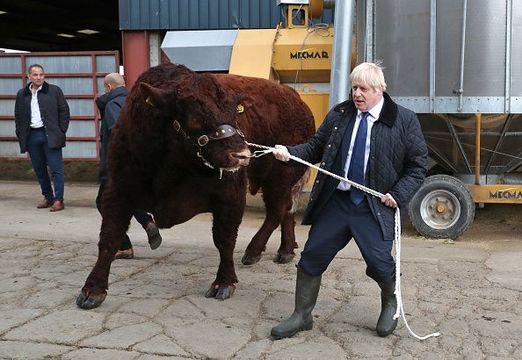
British Prime Minister Boris Johnson leads a bull around a pen as he visits Darnford Farm in Banchory near Aberdeen on September 6, 2019 in Aberdeen, Scotland. The Prime Minister travelled to Aberdeenshire visiting Peterhead fish market and a farm to coincide with the publication of Lord Bew’s Review and the announcement of additional funding for Scottish farmers. He is expected to stay overnight at Balmoral with the Queen. (Photo by Andrew Milligan - WPA Pool/Getty Images)Getty: Images
Awesome Aberdeenshire: Where life is always great
Several votes and notes in the past few years have named Aberdeenshire as having the highest quality of life in Scotland. Yes, there are objective indicators for such a determination: health, education, employment and such.
But what really makes life so great in this sprawling rural county in the far northeast corner of Scotland? Inquiring British Heritage Travel readers always want to know. Thus, I went to Aberdeenshire in search of the answer.
The city of Aberdeen itself is the northernmost city in Britain. Scotland’s third largest metropolis (population: about 210,000) is also one of Britain’s more affluent cities—its economy propped by its role as the support center for the North Sea oil fields.
Read more: The Royal tradition that ended with Prince Charles
Nicknamed the Granite City for the hard, gray building stone of which the city is constructed, Aberdeen boasts a flourishing local culture, a rich history—and of having won the annual Britain in Bloom competition a record 10 times. Ironically, as a city, it comprises its own unitary authority. In other words, Aberdeen isn’t in Aberdeenshire, though the Aberdeenshire County Council and administrative headquarters are located in the city.
So, I landed at Aberdeen’s attractive airport and headed north. The county itself stretches from the Cairngorm Mountains and the valley of the Dee River, where the royal hideaway of Balmoral lies hidden near the village of Ballater, to the North Sea coast.
It was a 50-mile drive north of the Granite City to Fraserburgh, a fishing town of 13,000 on the northeastern headland. There at the Fraserburgh Heritage Centre, I got a succinct answer to the question of what makes life great in this part of the world. “It’s the slower pace of life,” said Centre volunteer Tommy Thompson. “I moved up from Edinburgh, where everything was rush-rush, almost a dozen years ago, and I just love it here.” Everyone I spoke to echoed Thompson’s affection.
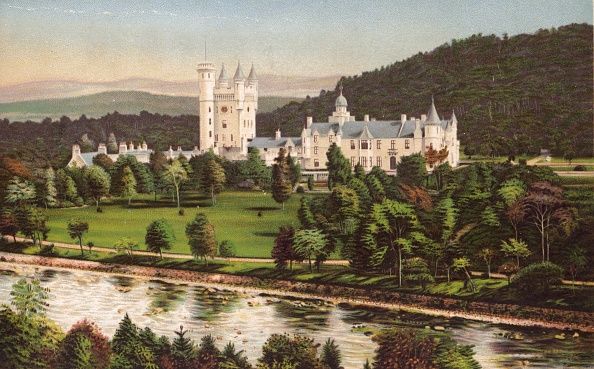
Balmoral Castle beside the River Dee in Aberdeenshire. Prince Albert, Queen Victoria's husband, purchased Balmoral Castle in 1846, and the small castle which stood in the 7,000 hectare wooded estate was redeveloped in the 1850s. The granite building was designed by Aberdeen architect William Smith with suggestions from Albert himself, who decided the interior decoration should represent a Highland shooting box with tartan or thistle chintzes, and walls decorated with trophies and weapons. Queen Victoria often visited the Highlands with her family, especially after Albertfs death in 1861, and Balmoral is still a popular retreat for the present royal family. (Photo by Hulton Archive/Getty Images)
Fraserburgh is a working fishing port, whose rusting commercial fleet in its harbor claims the largest annual shellfish catch in Britain. Of course, working seaports are rarely pretty. But my destination lay farther along the coast a dozen miles to the west: the tiny seaside village of Pennan.
A narrow single-track lane leads down from the West Coastal Road to the seafront and the white-washed cottages that line its quayside. It was pretty easy to find the Pennan Inn; it’s the only commercial establishment in the village. I checked in to one of its three bedrooms. The inn had stood vacant for several years before a young couple, Nikki and Peter Simpson, took it on some 18 months ago, determined to make a go of it. Peter does the cooking—and very well.
Read more: The Fosse Way
That evening I sampled his homemade cullen skink and it was brilliant. If that sounds off-putting, think smoked haddock chowder.

What I had anticipated, of course, was a couple of evenings sitting there in the attractive snug pub and visiting with grizzled locals who would recall Local Hero’s filming and talk about life then and life today. But Pennan has changed. There are only 12 residents in the village today. In the harbor, there is now one small fishing boat dancing with the tides. It goes out in the summer months to fetch lobsters. The rest of the trim, attractive cottages along Pennan’s street are now holiday homes, for weekenders escaping Aberdeen, or self-catering cottages let for a week at time. That’s something of a blessing for Nikki and Peter. “They come in here for meals, sometimes every day.” Peter has already earned a local reputation.
I walked the street several times, shooting pictures and pondering the story. At the far end of the street stands the village hall, empty, but apparently never locked. I went in to use the gents. There on the windowsill lay a saucer overflowing with coins to support the cleaning of the establishment. The quality of life in Pennan must still be pretty good. I followed the indescribably beautiful Coastal Trail west along what’s known as the Buchan Coast, to Banff and Macduff, passing imperceptibly at some point into Moray, then turning inland and back into Aberdeenshire.
At Huntly, I climbed around the dramatic ruins of Huntly Castle, famed as the medieval seat of the Gordons, Marquesses of Huntly. Here in the 16th century the powerful nobleman known as “The Cock of the North” held court—and control of the region. It was a baronial residence for more than five centuries. On the market square I stopped in to the Gordon Arms, recalling my first visit to Huntly in 1980, when a mustachioed retired major from the Gordon Highlanders refused to believe that I wasn’t a “Huntly by name, come home,” and the local lads lined up tepid whisky-and-lemonades on the bar for me far faster than I could get them down.
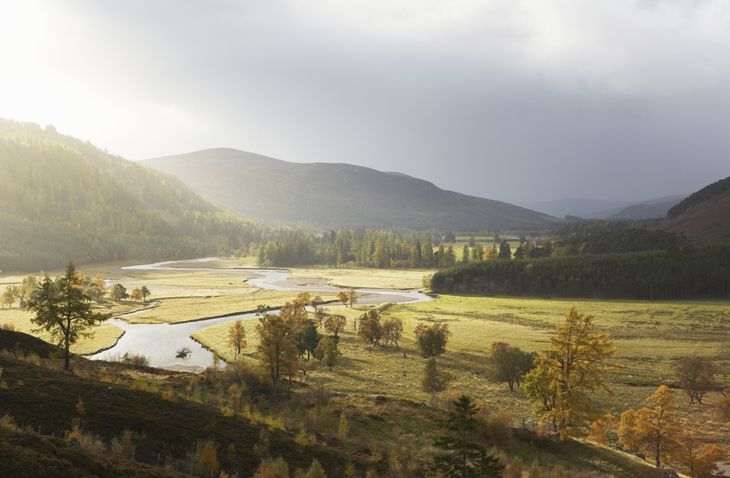
Horizontal; Colour; Color; Travel; Day; Nobody
Aberdeenshire, in fact, is awash with castles, with almost 300 of them scattered across the area. It’s known as “Scotland’s Castle Country.” It’s not the castles, gorgeous coastline or distilleries, however, that create the quality of life. Aberdeenshire is farming country.
This is not the rugged Highlands, or even the woodlands of the Cairngorms at the county’s southwest corner. Mile after mile, from Aberdeen north and west, the rolling countryside is largely unbroken, open, fertile farmland. I saw long-haired Highland cattle, herds of beef cattle and sheep, but principally this is Scotland’s bread basket, so to speak. Here they grow the oats for Scottish porridge and the barley for Scottish beer and whisky. Market towns like Huntly, Turriff, Ellon and Invervurie support the dominant agrarian economy and the surrounding farming villages.
And there, most probably, lies the real answer to the question. City folk down in Edinburgh or Glasgow may not understand it, but the quality of life is good in farming communities, and people I talked to everywhere across Aberdeenshire agreed. They may not be wealthy, but they are healthy and wise, friendly and content—and wouldn’t have life any other way. And then there’s that saucer full of coins sitting undisturbed back on the windowsill in Pennan.
Read more: The Holy Grail
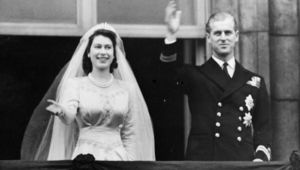
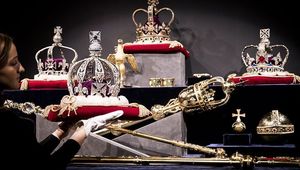

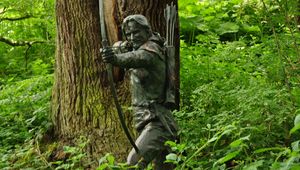
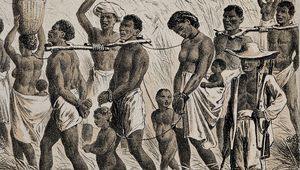


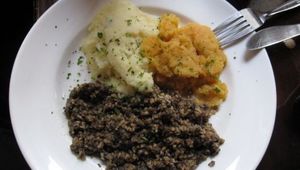
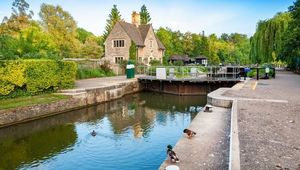

Comments